#Exhibits
Text

Aquamarine with Morganite from Minas Gerais, Brazil. By dusted77 on Instagram.
#aquamarine#morganite#mineral#minerals#exhibit#exhibits#minas gerais#brazil#munich#germany#geology#nature
7K notes
·
View notes
Text
instagram
At the SOCIETY OF ILLUSTRATORS on Instagram, see a video of my exhibit COLLEEN DORAN ILLUSTRATES NEIL GAIMAN.
Thanks so much to the Society of Illustrators, Neil Gaiman, and curator Kim Munson.
#society of illustrators#Neil Gaiman#Dark Horse Comics#exhibits#comic art in museums#sandman#snow glass apples#chivalry#norse mythology#troll bridge#american gods#Instagram
498 notes
·
View notes
Text
Upcoming Exhibit and Lecture: Illustrating the Renaissance Book: From Illumination to Woodcut
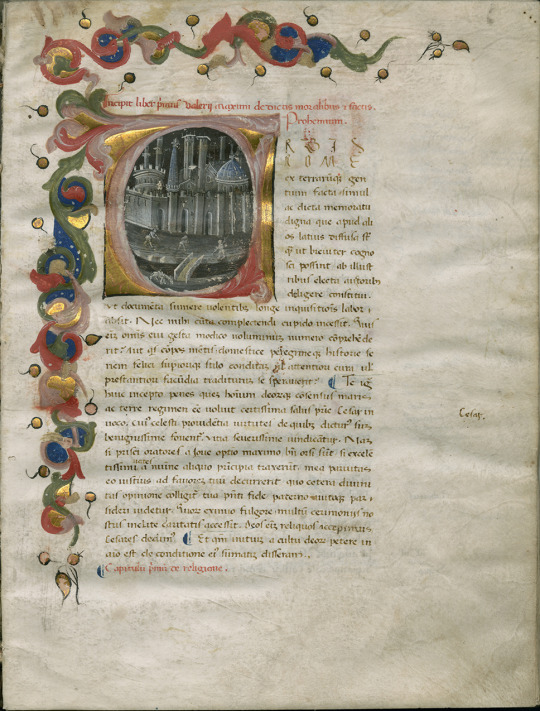
Valerius Maximus (1st c. AD). Factorum ac dictorum memorabilium libri IX. Italy. 15th c. Parchment,126 fols. Fol. 5r

Full-page illumination from Carta Executoria de hidalguia de sangre a pedimento de Don Juan de Mansilla como curador de Doña Francisca de Mansilla, hija de Baltasar de Mansilla, vecinos de la villa de Aranda de Duero. Valladolid, 1636 Parchment, 93 fols. Fol. 2r

Full-page woodcut depicting the procession of Priapus, the Greek god of animal and vegetable fertility. Hypnerotomachie, ou Discours du songe de Poliphile Ed: Jean Martin Paris: Jean le Blanc for Jacques Kerver, 1561 Fol. 69r. Loan courtesy of William P. Heidrich
Come explore a selection of manuscripts and early printed books from the 15th to the 17th centuries that were illustrated with illuminations and woodcuts! The display will be up in the Hatcher Gallery Exhibit Room from 6 September to 14 December.
And join us on Wednesday 13 September at 4p in the Hatcher Gallery event space or on zoom a for lecture based on the exhibit.
We hope to see you there!
#events#exhibits#special collections#special collections libraries#libraries#archives#libraries and archives#special collections and archives#manuscripts#manuscript culture#early printed books#book illustrations#illustrated books#illustrations#illumination#illuminated manuscripts#manuscript illumination#woodcuts
87 notes
·
View notes
Text
Van Gogh immersive experience
A Van Gogh immersive experience is any of a number of real-life or virtual reality (VR) exhibits of Vincent van Gogh's paintings. The for-profit events range across venues, organizers, and cities around the world, though the majority have been held in North America in 2021 and 2022. The events are typically set up in large gallery spaces. Images or videos of the artist's works are projected onto walls, ceilings, and floors, sometimes accompanied by animations, narrations, music, or fragrances.
259 notes
·
View notes
Text


Working on an exhibit mount for an accordion book that’s a facsimile of a Mexican codex
#codex#conservation#preservation#library#mexican codex#original content#exhibits#exhibit#libraries#books#rare books#accordion book
76 notes
·
View notes
Text
A Night at Mister Kelly’s
youtube
The Newberry's latest exhibit, A Night at Mister Kelly's, explores the iconic Chicago nightclub where patrons could see rising stars in jazz and comedy like Ella Fitzgerald, Sarah Vaughan, Mort Sahl, Steve Martin, Lily Tomlin, and Richard Pryor. For those who can't visit the Newberry in person, you can learn more about Mister Kelly's and see some of the archival images used in the exhibit with this video from curator Alison Hinderliter.
7 notes
·
View notes
Text
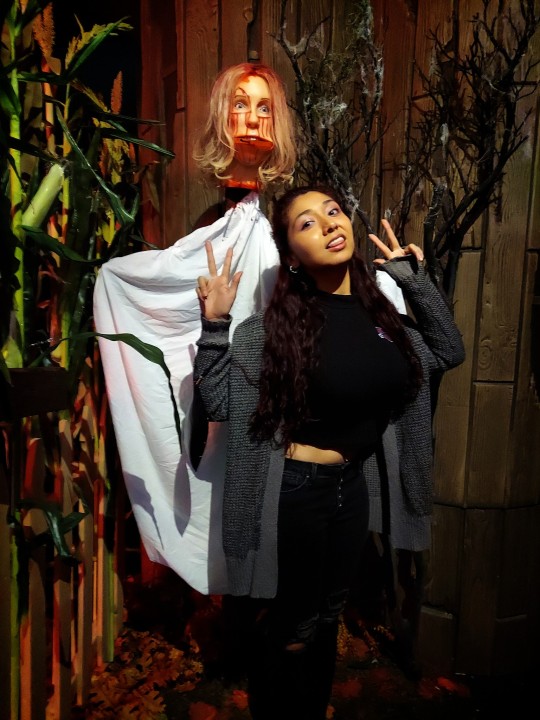

Went to a cool mini spooky walk-through with my sister this week! Here are my favorite exhibits; Trick 'r Treat, American Psycho and Saw🎃🪓🩸

#me#my pics#cannibalgh0st#2023#june#trick 'r treat#american psycho#horror movies#horror#scary movies#spooky#exhibits#cool stuff#halloween#halloween vibes#saw#scary
49 notes
·
View notes
Text


Give More Than You Take | Jim Hodges
Walker Art Center exhibit | mirror mosaic
#jim hodges#walker art center#exhibits#Give More Than You Take#mosaic#mirror#art#contemporary art magazine
17 notes
·
View notes
Text


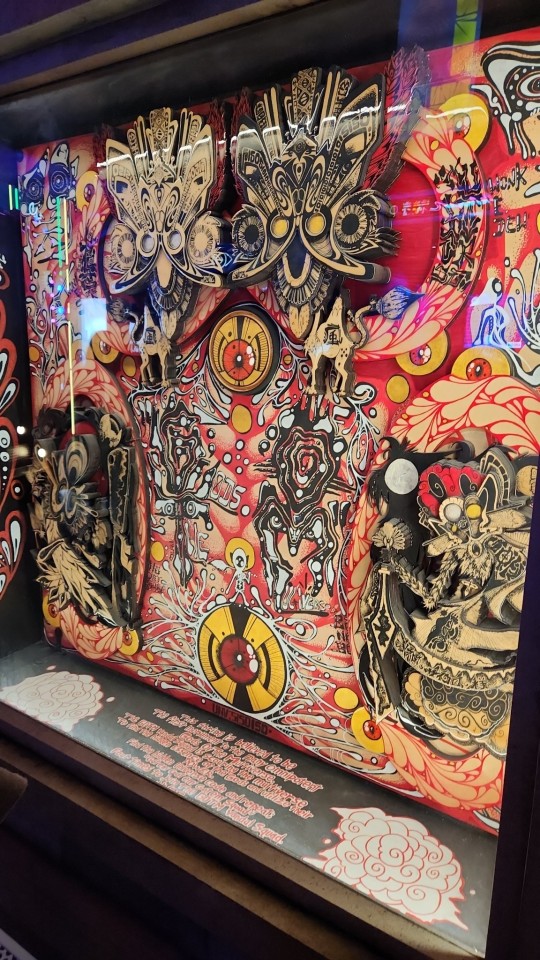







Had an adventure exploring Meow Wolf today.
#meow wolf#convergence station#denver#art#artwork#adventure#spring break#visual art#personal#me#new friends#exhibits
4 notes
·
View notes
Text
Transportation From Here to There: A Brief History

Cycles, carriages, and cars, oh my! Start the new year by viewing our latest exhibit on the history of transportation technology.
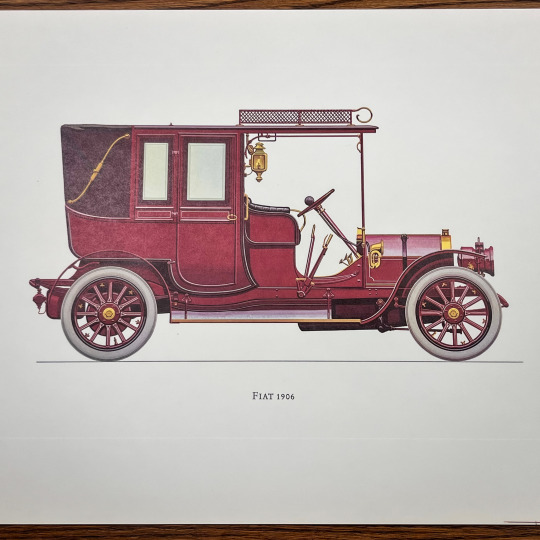
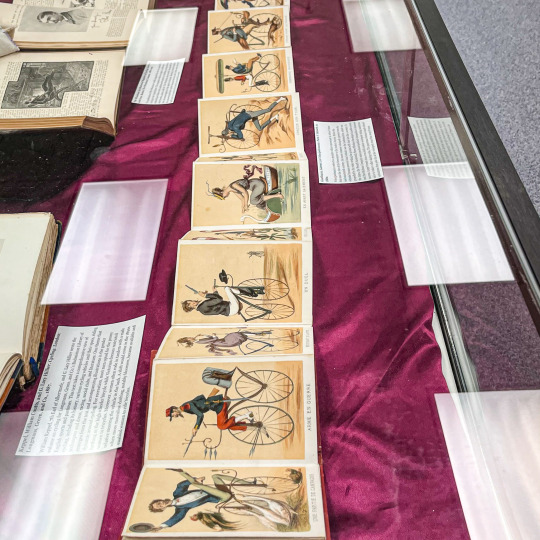
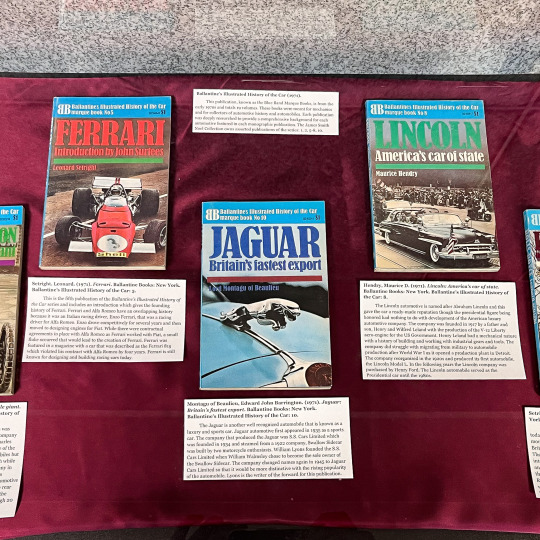
People are always on the move and have always found ingenious, inventive ways of getting where they want to go. Our latest exhibit features some of our more modern material, printed from the 1800s to the 1970s, as we examine the history of transportation from horse-drawn carriages to horse-less carriages and from bicycles to trains. Although we specialize in older materials, we have several interesting, more modern sources that are guaranteed to take you back in time to the not-so-distant past.
Open January 9 – April 10, 2023
James Smith Noel Collection, 3rd floor Noel Memorial Library, LSUS (on Youree)
#rare books#special collections#exhibits#transportation#cycling#automobiles#horse carriages#rolls royce
33 notes
·
View notes
Text
Check out this Google Arts and Culture exhibit from Roger Turner, Curator of Instruments and Artifacts at the Science History Institute. If you're in Philly, come on by and see the exhibit outside on the facade of our museum!
#exhibits#google arts and culture#plastic bag#Othmer library#science history institute#science history#outdoor exhibits#museum exhibits
6 notes
·
View notes
Text






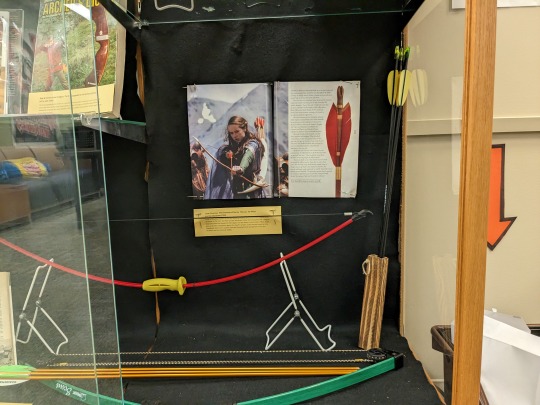

Check out our archery exhibit! From Cupid to Katniss: Archery in Popular Culture shows the range (get it? like an archery range?) of material we have about archery in the United States. If you'd like to learn more about what's featured here, click on the read more below!
The Browne Popular Culture Library (BPCL) would like to thank the Wood County Park District (WCPD) for lending us a compound bow and set of arrows. WCPD offers both a range for archers to use with their own equipment and archery lessons with equipment provided. For more information, please visit wcparks.org.
The BPCL would also like to thank graduate student supervisor John King for lending us his bow and arrows for this exhibit.
The Browne Popular Culture Library, founded in 1969, is the most comprehensive archive of its kind in the United States. Our focus and mission is to acquire and preserve research materials on American Popular Culture (post 1876) for curricular and research use. Visit our website at https://www.bgsu.edu/library/pcl.html.
Introduction
Archery has been an important part of many cultures around the world for over 70,000 years, dominating hunting and warfare as the main long-range weapon until firearms became more effective and popular in the 1500s. Archery as a recreational sport emerged in the 1800s in Great Britain and has since spread around the world. Today, archery is practiced in a variety of forms, including competitive and traditional methods, as well as bow hunting.
Because archery has played such an influential role in various cultures, there are many famous archers in folklore, mythology, and popular culture. In the 2010s in the United States, several highly successful movies brought a new wave of popularity to the sport, especially among girls and young women. This exhibit displays only a few of the hundreds of examples of archery in American popular culture.
Different Kinds of Bows
Although there are many different styles of bows around the world, there are three main kinds seen in American popular culture.
Recurve
A recurve bow is what many of the archers in this exhibit use – such as Princess Merida, Katniss Everdeen during the Games, and Kate Bishop – and is the only kind of bow allowed in Olympic archery. The ends of the bow curve away from the archer and are able to store more energy than a traditional longbow at shorter lengths, making them ideal for a wide variety of people. Recurve bows can be made in one long piece, or in three pieces that come apart for easy transportation.
Compound
Compound bows use a system of cables and pulleys to help the archer draw their arrow and store the maximum amount of energy without requiring the archer to hold extreme weight before shooting their arrow. Compound bows are very new compared to recurve bows, as they were only invented in the 1960s. They are very popular among both competition archers and hunters for their increased precision and energy storage.
Longbows
Longbows are one of the oldest kinds of bows in archery history, with examples dating to around 3300 BCE. When strung, they make a D shape and do not curve. Medieval England made heavy use of the longbow in wartime to the point where most common men were required to train with the longbow in case war was declared against a neighboring kingdom. Longbows require more brute strength to use than either recurve or compound bows, and frequent use of the longbow leaves noticeable changes in an archer’s skeleton.
Featured Material
Carolyn Griffith, Frank Gandy, Larry Wise, and Jim Brown, Bear Archery Catalog (1986)
Bear Archery was founded in 1933 by Fred Bear, who wanted to encourage archery as a sport and method of hunting. This 1986 issue of their catalog highlights prize-winning archers who use Bear Archery products. On the right is Jim Brown, the first Black archer to win specific national and international championship titles, despite facing racist discrimination from the mostly white archers he competed against. He started his archery experience at the Mohican Bowmen, the first all-black archery club in the US, in southern Maryland.
The Fundamentals of Japanese Archery (1937) by Toshisuke Nasu, trans. William R. B. Acker
Although Japanese archery – known as kyūdō – similarly saw a decline after the introduction of firearms in the 1500s, its modern version differs from American and European archery in both form and equipment. Kyūdō bows are much longer than western bows, and kyūdō archers pull the arrow back much further than western archers. As a martial art, kyūdō includes spiritual as well as physical development, though this varies wildly between different dōjō. Unlike many Japanese martial arts, kyūdō never became very popular in the United States. One of the main American books about kyūdō is Zen in the Art of Archery (1948) by Eugen Herrigel, which misrepresents the sport as far more mystical than kyūdō actually is. The book on display here, The Fundamentals of Japanese Archery, a translation by William R. B. Acker of instructions by kyūdōka (kyūdō master) Toshisuke Nasu, is more focused on form than spirituality.
Archery (1941), Boy Scouts of America Merit Badge Series
Merit badges in the Boy Scouts of America encourage young scouts to explore and master activities promoting character, citizenship, personal fitness, and leadership. Archery is one of the oldest merit badges and dates back to 1911. When this handbook was written in 1941, Scouts were required not only to learn how to shoot properly, but also to explain range safety rules; proper equipment construction, maintenance, and storage; and the history of archery as a sport.
Princess Merida of Dunbroch, Brave (2012) poster
Merida, the strong-willed daughter of King Fergus, refuses to be married off to her father’s allies and exploits the rules of the Highland Games to compete in an archery tournament, which she easily wins. Merida’s form is considered highly accurate for a recurve archer, especially during the tournament scene in which she declares, “I am Merida, first born descendant of Clan Dunbroch, and I’ll be shooting for my own hand!”
Ann Marston, Shooting Star: The Amazing Life of Ann Marston (2007) by Alana Paluszewski
Although she was born in England, Ann Marston was a successful figure in multiple American popular culture industries, such modelling, pageantry, music production, and, of course, archery. Marston started her archery journey overseas before her family emigrated to Detroit, MI, in order for her father to work at an archery shop. Marston won many junior titles, including first place at the Maumee Valley Bowmen Invitational Tournament in Toledo, OH, and her record-breaking scores enabled her to compete among adult women at age 15 in the 1954 National Field Archery tournament. She also competed in Miss Michigan and, later, Miss America 1960, using archery as her talent demonstration. Because of her youth, skill, and All-American appearance, Marston was a frequent guest on talk shows and in magazines. Unfortunately, Marston had to give up archery when her vision began to fail due to complications from diabetes. Before she passed away at age 32, she managed several rock bands from the Michigan area.
Apollo and Artemis, The Trials of Apollo: The Hidden Oracle (2016) by Rick Riordan
The Greek gods Apollo and Artemis are perhaps two of the most well-known archers from world mythology. They are often attributed with inventing archery and teaching the sport to mankind. In the world of Percy Jackson – the demigod son of Poseidon – Apollo and Artemis play minor roles, until the Trials of Apollo series, which stars Apollo as a god stripped of his divinity and forced to live amongst mortals.
Katniss Everdeen, The Hunger Games (2008) by Suzanne Collins, plus doll.
In The Hunger Games trilogy, Katniss Everdeen volunteers in place of her sister to compete in a battle royale organized by a tyrannical government. Katniss survives in part due to her skill with a bow and arrows, which she uses to hunt food and kill her competitors. The Hunger Games was adapted into a series of four films in 2012. Jennifer Lawrence, the actress who played Katniss, was taught by bronze-winning Olympic archer Khatuna Lorig in how to accurately shoot a recurve bow for the film. The popularity of The Hunger Games film led to a surge of young girls and women joining archery as a sport.
Kate Bishop/Hawkeye, Marvel Comics/Marvel Cinematic Universe
Kate Bishop first made an appearance in Young Avengers #1 (April 2005; pictured here) as a headstrong civilian trained in a variety of martial arts, including a bow and arrows borrowed from the previous Hawkeye, Clint Barton. She starred in her own series in 2016 and again in 2021, among other appearances, as well as in the Disney+ miniseries Hawkeye (2021), where she is played by Hailee Steinfeld. Although Steinfeld learned how to shoot properly for the role, there were no arrows on her bow – they were added later by CGI.
Bow & Arrow Archer’s Digest: The Encyclopedia for All Archers (1971) ed. by Jack Lewis
The Encyclopedia for All Archers is a comprehensive guide to the practice of archery. It covers the history of archery; bowmaking; target shooting; and bowhunting. Although somewhat outdated, the encyclopedia is still an excellent resource for people wanting to learn about archery.
Ripley’s Believe It or Not! Oddities in Sports (1968) by Ripley Enterprises, Inc.
This 50th anniversary celebratory edition for Ripley’s Believe It or Not writes that a man named Baquir Khan Najmai Sani performed “the most amazing feat of archery in all history!” Despite Ripley’s claim that all the stories featured in their books are true, the accuracy of this story is questionable, with no known sources to back it up. However, there are many different kinds of archery trick shots, such as blowing out a candle flame without touching the wax, so Baquir Khan Najmai Sani’s trick is definitely possible! Just difficult.
Archery Handbook (1954) by Edmund H. Burke
Having good arrows that are as identical as possible is one of the most important parts of practicing archery. While modern arrows are made from aluminum or carbon fiber, arrows have historically been made of a variety of wood, such as Port Orford Cedar or birch. This spread from the Archery Handbook shows women mass producing wooden arrows, though the book itself gives instructions for archers to make their own arrows and other equipment.
Susan Pevensie, The Chronicles of Narnia: The Lion, the Witch and the Wardrobe (1950)
Susan is the second-oldest of the four Pevensie children who travel to the magical world of Narnia. In The Lion, the Witch and the Wardrobe, Father Christmas gifted her a magical bow and arrows that always hit their target. In a later book, Prince Caspian (1951), Susan wins an archery competition against the dwarf Trumpkin. Susan was portrayed by Anna Poppelwell, seen here in a photo from the illustrated movie companion to The Lion, the Witch and the Wardrobe (2005).
Adaptive Archery Instruction Manual by USA Archery
Archery is very easy to adapt for people with a wide range of disabilities. USA Archery, the main governing body for Olympic-style archery in the US, has made multiple resources available for coaches and ranges to use when teaching archery in different ways. Adaptations include everything from specialized equipment to range modifications for wheelchairs and canes to smaller group classes. Silver medal Paralympian Matt Stutzman – also known as the Armless Archer – uses his shoulder and legs to shoot instead of his arms and hands.
#bgsu#archery#adaptive archery#exhibits#bear archery#boy scouts#kyudo#brave movie#ann marston#trials of apollo#the hunger games#katniss everdeen#kate bishop#ripley's believe it or not#chronicles of narnia#susan pevensie#merida
10 notes
·
View notes
Text
MOCCA Arts Festival

Announcing the 2023 MoCCA Arts Festival Featured Guests
The Society of Illustrators is proud to share a list of Featured Guests who will appear at the MoCCA Arts Festival, taking place April 1 - 2, 2023 from 11:00AM - 7:00PM on Saturday and 11:00AM - 6:00PM on Sunday. The Exhibitor Hall will be held at Met Pavilion, a spacious venue nestled in the heart of the Chelsea neighborhood, and is within walking distance to many great restaurants and attractions. Programming will be a few steps away at the SVA Flatiron Gallery, located at 133 West 21st Street.
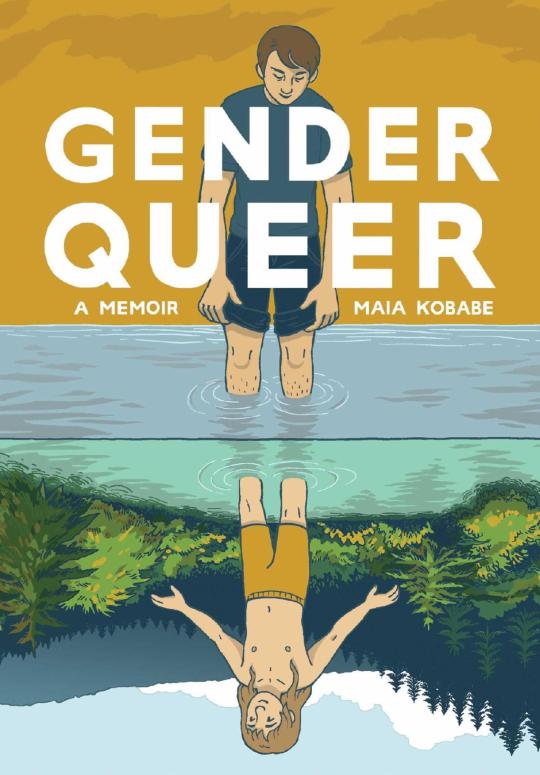
Maia Kobabe is the author of Gender Queer (Oni Press), a critically acclaimed Young Adult graphic memoir that has also been named a Stonewall Honor book. Gender Queer was also ranked by the American Library Association as the most frequently banned or challenged book in the United States in 2021. Kobabe will talk about eir work in a special spotlight session moderated by Michele Kirichanskaya and will also participate in a panel on comics and censorship hosted by PEN America’s Jonathan Friedman.

In her career, Colleen Doran has written and drawn the long-running creator-owned series A Distant Soil and has worked on titles including Wonder Woman, Amazing Spider-Man, and many others. Her body of work includes a series of collaborations with writer Neil Gaiman which are the subject of the exhibit “Colleen Doran Illustrates Neil Gaiman,” running from March 22nd to July 29th at the Society of Illustrators. She will appear in conversation with Gaiman to discuss their comics collaborations and her overall body of work in a special programming event moderated by exhibition curator Kim Munson.

Barbara Brandon-Croft became the first Black woman to write and draw a nationally syndicated comic strip when Where I’m Coming From debuted in American newspapers in 1991. Featuring a cast of nine women of color commenting insightfully on current events, her groundbreaking comic strip has now been anthologized in a book edition from Drawn and Quarterly. Brandon-Croft will talk about her trailblazing work in a special spotlight session.
Other featured artists at this year’s festival will include:
Kim Deitch, a pioneering underground comix artist who began publishing comics in the East Village Other in 1967 and whose most recent graphic novel, Reincarnation Stories (Fantagraphics) was published to critical acclaim in 2019.
Drew Friedman, whose most recent book of portraiture, Maverix and Lunatix (Fantagraphics), celebrates the artists of the underground comix generation
Miriam Katin, whose out-of-print graphic memoir of escaping the Holocaust as a child refugee accompanied by her mother, We Are On Our Own (Drawn & Quarterly), will be republished in a forthcoming paperback edition.
Toma Vagner, the award-winning illustrator who designed this year’s MoCCA key image and has produced striking graphics for clients including Harry Styles, Google, The New York Times, Bloomberg, and The New Yorker.
Noah Van Sciver, whose body of graphic novels includes Joseph Smith and the Mormons (Abrams ComicArts), Fante Bukowski (Fantagraphics Books), and the forthcoming comic book series Maple Terrace (Uncivilized Books).
These and other Featured Artists will participate in programming and signings, schedules for which will be announced in the coming days and weeks. A full list of exhibiting artists can be found on the MoCCA Arts website.
About the Museum of Illustration at the Society of Illustrators and the MoCCA Arts Festival
Founded in 1901, the Society of Illustrators and its Museum of Illustration together comprise America’s longest-standing nonprofit organization dedicated to the art of illustration. The mission of SI/MI is to promote the art and appreciation of illustration and its history and evolving nature through exhibitions and educational programs.
The MoCCA Arts Festival is a 2-day multimedia event, Manhattan’s largest independent comics and cartoon festival, drawing over 7,000 attendees each year. With over 500 exhibiting artists displaying their work, award-winning honorees speaking about their careers and artistic processes and other featured artists conducting demos, lectures and panels, our Festival mission accelerates the advancement of the Society’s broader mission to serve as Manhattan’s singular cultural institution promoting all genres of illustration through exhibitions, programs and art education.
The Society will continue to release additional information about the Fest in the near future. Tickets are available to purchase online as well as at the door. The Society is following all state and city safety protocols. Protocols are subject to change, so be sure to check back for the latest information. As of now, face coverings are optional at Metropolitan Pavilion and the Exhibitor Hall. Proof of vaccines, boosters and masks are required to enter SVA buildings and programming.
To learn more about the Fest, please visit the website.
For media inquiries please contact:
Kate Feirtag
Director of Communications and External Relations
#exhibits#personal appearance#neilgaiman#neil gaiman#MOCCA#maia kobabe#drew friedman#society of illustrators
393 notes
·
View notes
Text
Obesity: The Science, Culture, and Politics of Fatness in America
In Fall 2023, students enrolled in Dr. Margot Finn's course on the science, culture, and politics of obesity worked in groups to research and write captions for food history materials.
Most of these items were from the Special Collections Research Center's Janice Bluestein Longone Culinary Archive.
These were featured on the Shapiro Library Screens in Bert's Study Lounge.
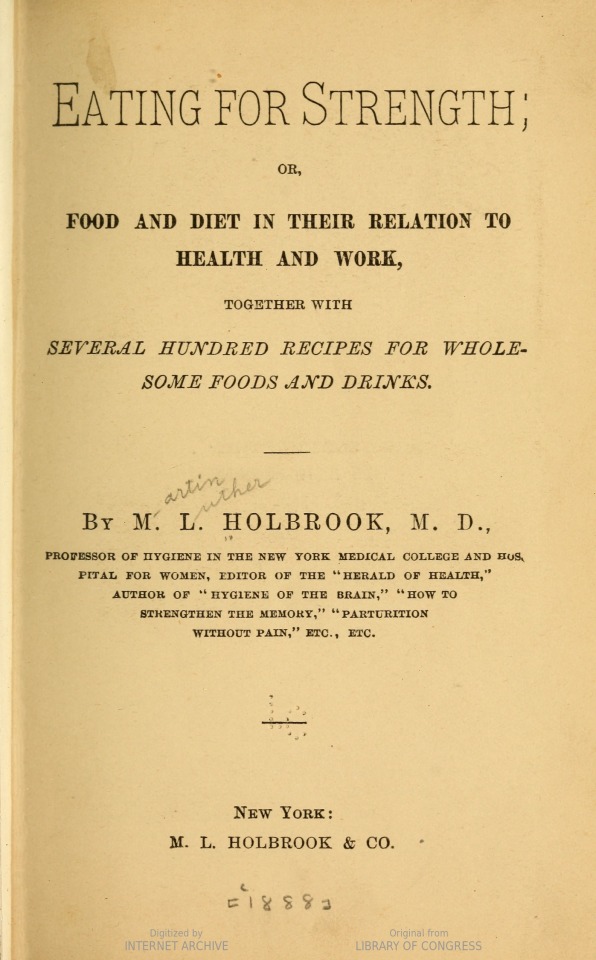
M. L. Holbrook, Eating for Strength (New York, M. L. Holbrook & co. [c1888]). Library of Congress.
The 1888 edition of Eating for Strength, a popular 19th century work on diet written by Martin Luther Holbrook approaches food in a scientific manner, outlining the dietary needs of various classes of people and looking at the healthfulness of various foods. This book includes information about food and diet in relation to health and work, together with several hundred recipes for different foods and drinks. All of these tables illustrate the protein, carbohydrate, and fat content of some of the most common foods that characterized the diets of that era. This underscores how even over 100 years ago, these three macronutrients were seen as important to monitor in order to curb obesity.
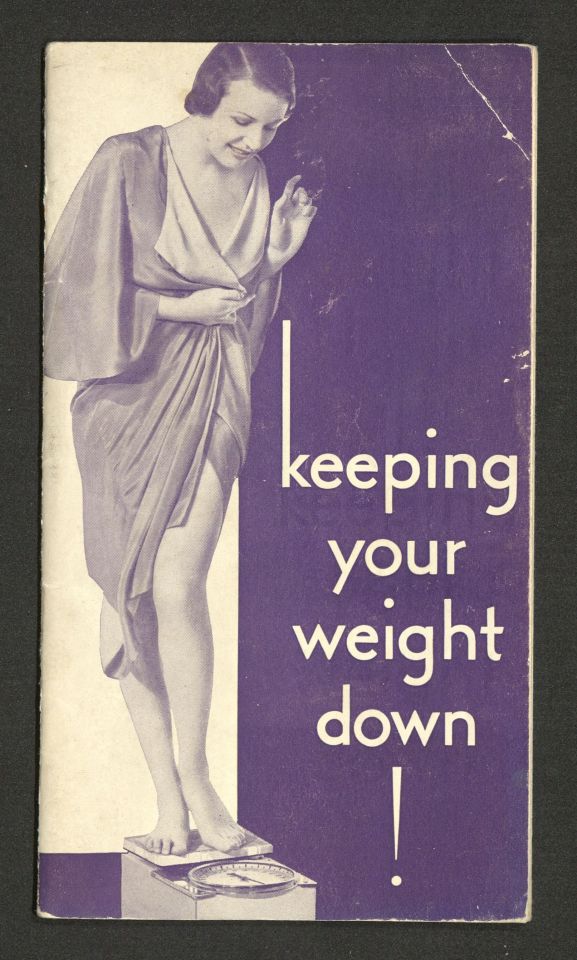
Keeping Your Weight Down (Westfield, N.Y. : Welch Grape Juice Co., [1921?]). Janie Bluestein Longone Culinary Archive.
Published by Welch Juice Company in 1921, this recipe book called Keeping Your Weight Down suggests that Welch's Grape Juice can aid in weight maintenance, and emphasizes its importance in influencing desired health benefits with their beverage. The
monochrome-purple book cover showcases an idealized “thin” model covered in loose night clothing, examining a weight scale. Inside, “Pudding and Desserts” recipes are listed in sections with the usage of Welch brand ingredients. Framing grapes as dessert, often eliminated in dieting practices, allows for the luxury of sweets within the strictures of losing weight.

Ruth West, Stop Dieting! Start Losing! (New York : E.P. Dutton & Company, Inc., 1956.). Janice Bluestein Longone Culinary Archive.
Although Ruth West’s Stop Dieting! Start Losing! was a dieting recipe book published in 1956, the artifact has a startling resemblance to modern attitudes about weight, despite the huge body of research conducted on obesity since this time. Today, It’s easy to laugh at slogans like “how to lose 2 to 3 pounds a week” and “16 foods for sex appeal and vitality,” but how different are these claims from those we hear today from diet magazines, social media and even our own medical professionals? Is the rigor of evidence from then to now all that different?
Read more!
#libraries#archives#special collections#special collections libraries#libraries and archives#american culinary history#archival collections#archival research#exhibits#student curators#students#food studies#food history#janice bluestein longone#jblca#janice bluestein longone culinary archive#obesity#diet#weight loss diet#culinary history#culinary#cookbooks#cooking#cookbook#recipe#cooking tips
16 notes
·
View notes
Note
I’m back again! Because I realized what I should’ve asked you: if you could set an exhibit anywhere in the world, who’s the artist, where would it be, and what’s the overall vibe?
(This Nice Ask brought to you by our Chihuly commiseration.)
Okay, so one, I will never not be envious about that Chihuly exhibit.
Two, okay, so one of the things that always blows me away is how painters capture fabric - the texture, and the color, the drape, the translucence or the weight of fabric. I'd love to see an exhibit that showcased paintings from different periods and then recreated the things people were wearing in them so you can see the detail in what the painter captured. So, those medieval religious paintings with the miles of lustrous red and blue and green draped dresses where the folds of cloth look like they have dimension and you can feel the crispness of the folds. And the Dutch Renaissance paintings with the lace and the black silk. And all the 17th/18th C portraits with the elaborately embroidered vests and just endless waterfalls of lace sleeves.
Okay, also, not an exhibit exactly - but you know how there are historical (not exactly, but kind of) theme parks for places like Colonial Williamsburg so you can get a sense about how people lived. And, there are a lot of castles/manor houses in Europe that are furnished and you can walk around and see how the rooms were used. I want someone to do a recreation of a Roman town - because you go and you look at mosaics and the stumps of walls and it's really hard to imagine what that really looked like, and how people lived in them.
Also, I want them to do that chihuly exhibit again somewhere near me - or in London again, or Paris, I'd travel for that.
4 notes
·
View notes
Text
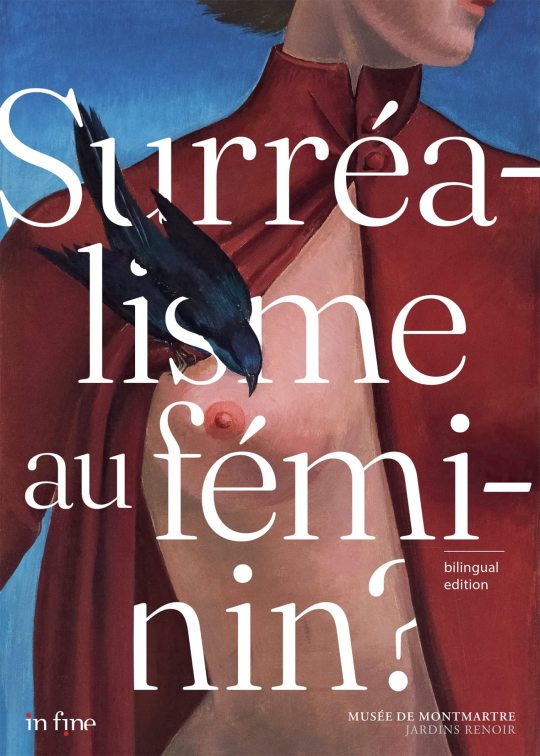

Accompanying the current exhibition Surrealism au fémin at the Musée de Montmartre, this bilingual French/English catalogue presents "une cartographie d’un mouvement éclaté et mondialisé que l’exposition esquisse en évoquant les foyers belge, mexicain, britannique, américain, praguois et français du Surréalisme que ces femmes ont enrichis, passant parfois de l’un à l’autre."
6 notes
·
View notes